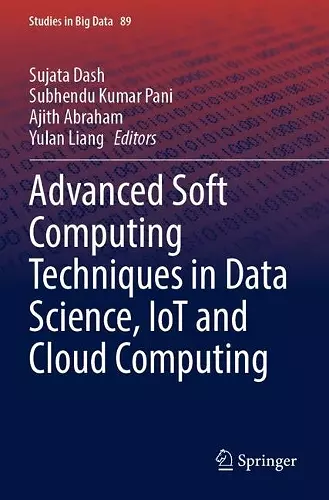Advanced Soft Computing Techniques in Data Science, IoT and Cloud Computing
Subhendu Kumar Pani editor Ajith Abraham editor Sujata Dash editor Yulan Liang editor
Format:Paperback
Publisher:Springer Nature Switzerland AG
Published:6th Nov '22
Currently unavailable, and unfortunately no date known when it will be back
This paperback is available in another edition too:
- Hardback£149.99(9783030756567)

This book plays a significant role in improvising human life to a great extent. The new applications of soft computing can be regarded as an emerging field in computer science, automatic control engineering, medicine, biology application, natural environmental engineering, and pattern recognition. Now, the exemplar model for soft computing is human brain. The use of various techniques of soft computing is nowadays successfully implemented in many domestic, commercial, and industrial applications due to the low-cost and very high-performance digital processors and also the decline price of the memory chips. This is the main reason behind the wider expansion of soft computing techniques and its application areas. These computing methods also play a significant role in the design and optimization in diverse engineering disciplines. With the influence and the development of the Internet of things (IoT) concept, the need for using soft computing techniques has become more significant than ever. In general, soft computing methods are closely similar to biological processes than traditional techniques, which are mostly based on formal logical systems, such as sentential logic and predicate logic, or rely heavily on computer-aided numerical analysis. Soft computing techniques are anticipated to complement each other. The aim of these techniques is to accept imprecision, uncertainties, and approximations to get a rapid solution.
However, recent advancements in representation soft computing algorithms (fuzzy logic,evolutionary computation, machine learning, and probabilistic reasoning) generate a more intelligent and robust system providing a human interpretable, low-cost, approximate solution. Soft computing-based algorithms have demonstrated great performance to a variety of areas including multimedia retrieval, fault tolerance, system modelling, network architecture, Web semantics, big data analytics, time series, biomedical and health informatics, etc. Soft computing approaches such as genetic programming (GP), support vector machine–firefly algorithm (SVM-FFA), artificial neural network (ANN), and support vector machine–wavelet (SVM–Wavelet) have emerged as powerful computational models. These have also shown significant success in dealing with massive data analysis for large number of applications. All the researchers and practitioners will be highly benefited those who are working in field of computer engineering, medicine, biology application, signal processing, and mechanical engineering. This book is a good collection of state-of-the-art approaches for soft computing-based applications to various engineering fields. It is very beneficial for the new researchers and practitioners working in...ISBN: 9783030756598
Dimensions: unknown
Weight: unknown
434 pages
2021 ed.